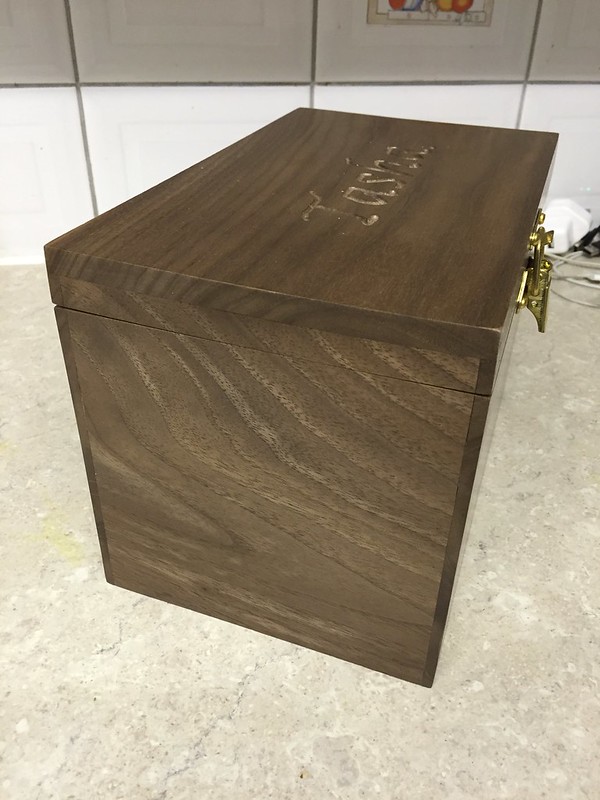LFS19
Established Member
I'm trying to decide On the best way to make a jewellery box.
Any tips?
I was thinking dovetails?
Thanks allot.
Any tips?
I was thinking dovetails?
Thanks allot.

marcros":3w07ondn said:dovetails always look good.
without being rude, what is your level of experience- it would help you to get some more relevant answers. For example, I would say that the best is a secret mitred dovetail, but i have no hope in hell of being able to cut one myself!

Sporky McGuffin":39hwtz0n said:I like keyed mitres, because they are the limit of my abilities.





Londoner100":2k8c61lz said:Mine are just simple rebates as I struggle with Dovetails, by the time I have a couple of ill fitting dovetails cut I can have a box with a rebate made (more practice required for me)

LFS19":211bau2n said:Londoner100":211bau2n said:Mine are just simple rebates as I struggle with Dovetails, by the time I have a couple of ill fitting dovetails cut I can have a box with a rebate made (more practice required for me)

Nice, that's a good idea.
Does the joint hold well?
When I say I managed a dovetail, I've done it twice and only over as practice.
It held fine, but obviously as a notice it was far from perfect.
I thought about rebates but was concerned it might go wrong and they wouldn't hold.
Londoner100":2lxdgopx said:LFS19":2lxdgopx said:Londoner100":2lxdgopx said:Mine are just simple rebates as I struggle with Dovetails, by the time I have a couple of ill fitting dovetails cut I can have a box with a rebate made (more practice required for me)

Nice, that's a good idea.
Does the joint hold well?
When I say I managed a dovetail, I've done it twice and only over as practice.
It held fine, but obviously as a notice it was far from perfect.
I thought about rebates but was concerned it might go wrong and they wouldn't hold.
They hold up really well, as long as the wood is flat and you leave them clamped long enough for the glue to set.
Ian
LFS19":2e7nr46y said:Sporky McGuffin":2e7nr46y said:I like keyed mitres, because they are the limit of my abilities.
Those look nice, though the prospect of making a jig as a novice like me seems daunting.
Thanks
I'm making it for my girlfriend for Christmas and I'm going to scribe her name on the top like you've done.
How long did the project take you?
Londoner100":pnthejsd said:Once I get the table saw working correctly keyed mitres will be used for the next one with contrasting woods.Ian
custard":304g3m9n said:Londoner100":304g3m9n said:Once I get the table saw working correctly keyed mitres will be used for the next one with contrasting woods.Ian
Ian, keyed mitres are an excellent choice, just be careful of one thing. Most table saws have Alternate Top Bevel (ATB) blades, so each tooth comes to a triangular point that alternates tooth by tooth. This means the base of the slot that you cut won't be flat, it will have a ridge running down the centre which will produce a nasty, gappy glue line. The solution is either a really fine chisel or file to knock the ridge off, or a flat top saw blade. Personally I'd recommend having a flat top saw blade in reserve for applications like this (not for general sawing), as you'll find it invaluable for all sorts of jointing applications. They're often, but not always, rip cut blades, but you'll be able to identify the correct blade from the enlarged tooth diagram that always accompanies saw blades.
Good luck!
If you want to know how to cut the finest secret mitred dovetails on the planet then David Charlesworth has a new video out, if you want to know how the rest of us go about making this joint have a look at this,
https://www.youtube.com/watch?v=kzNhv1kID6E
Enter your email address to join: